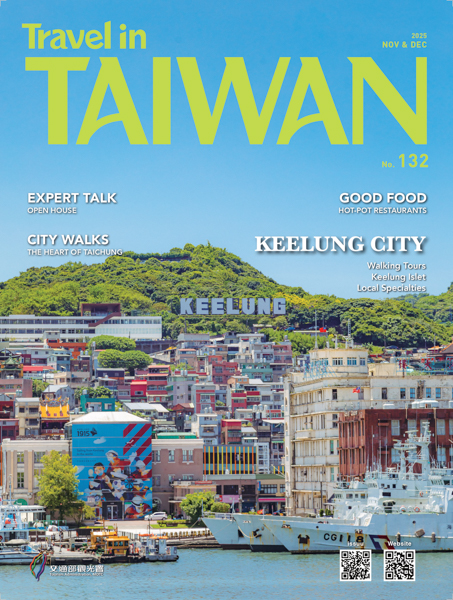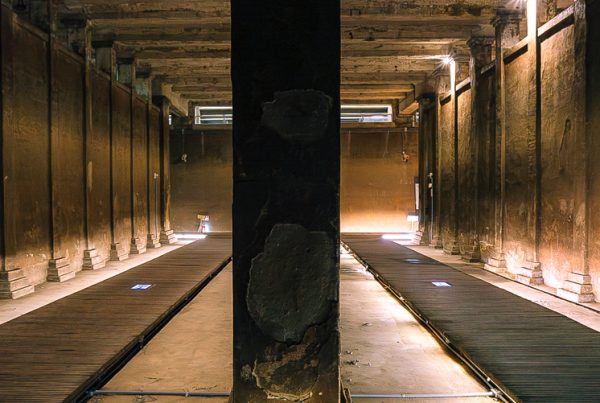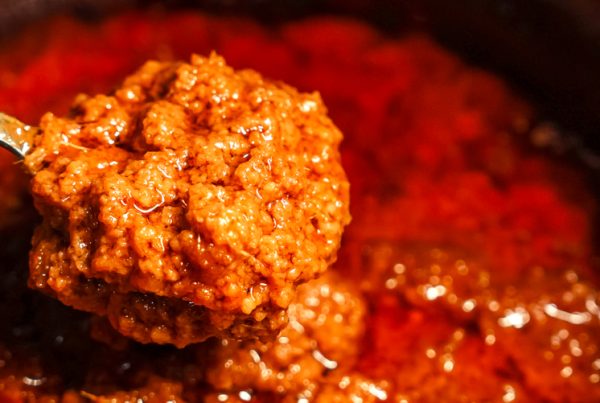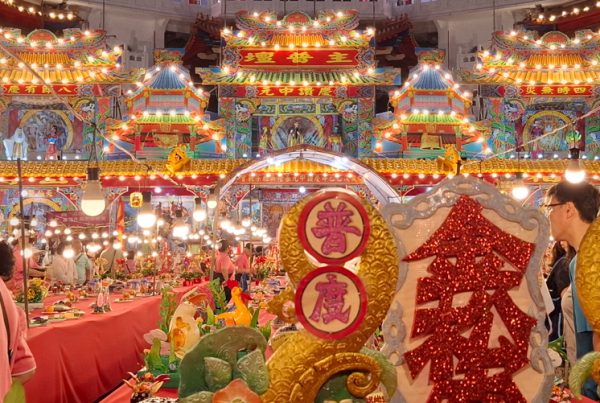Making Old-Time Treats in a Lovely Restored Traditional Red-Brick Courtyard Residence
TEXT | HAN CHEUNG
PHOTOS | RAY CHANG
As many of Taiwan’s traditions fade into modernity, a growing number of businesses on the island are focusing on crafts, foods, and practices with deep cultural roots. These ventures aim to preserve and breathe new life into Taiwan’s rich heritage, and are popular with those seeking a more meaningful connection with local culture and community.
Siang Khau Lu Cultural Kitchen
As a child, whenever the sweet, familiar scent of steaming rice cakes drifted through her grandma’s house, Chou Pei-yi knew a festival or sacred ritual was near.
Depending on the type being made, she could also tell what occasion was coming up: in Taiwanese pronunciation, ang-ku-kue (red turtle-shaped glutinous rice cakes filled with sweet bean paste) for the Jade Emperor’s birthday; chhau-a-koe (savory cudweed and glutinous-rice cakes with ground pork) for the Tomb Sweeping Festival.
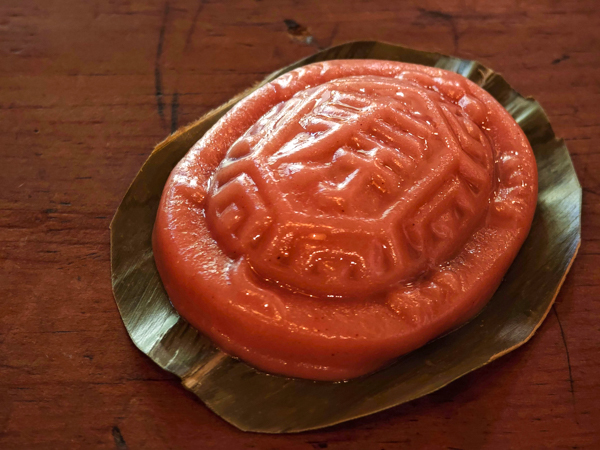
Now 97, her grandmother can no longer make the cakes, while Chou’s parents, busy with work during the years of Taiwan’s rapid industrialization, never learned the craft. Today, most makers of traditional rice cakes are in their 70s and 80s, with few young people taking their place. Many of today’s entrepreneurs prefer making Western or Japanese pastries, which are trendier, more profitable, and easier to preserve, leaving the tradition of creating rice cakes a disappearing art.
Even rice consumption itself – once the foundation of Taiwanese cuisine – has dropped by more than 50 percent since the 1980s.
Today, Chou and her husband, Huang Teng-wei, are trying to reverse these trends through their kitchen classroom, Siang Khau Lu, located in a beautifully restored traditional three-sided courtyard residence in a semi-rural area of Taoyuan City. The studio is named in honor of Chou’s grandmother, who taught them how to make rice cakes over several years before they opened the space in 2019. Siang Khau Lu means “Double Mouth Lu,” and refers to the grandmother’s surname Lu (呂); the two squares in the character are the “mouths”. By teaching participants to make the cakes from scratch, they aim to deepen their understanding of both the labor involved and the cultural significance behind them.
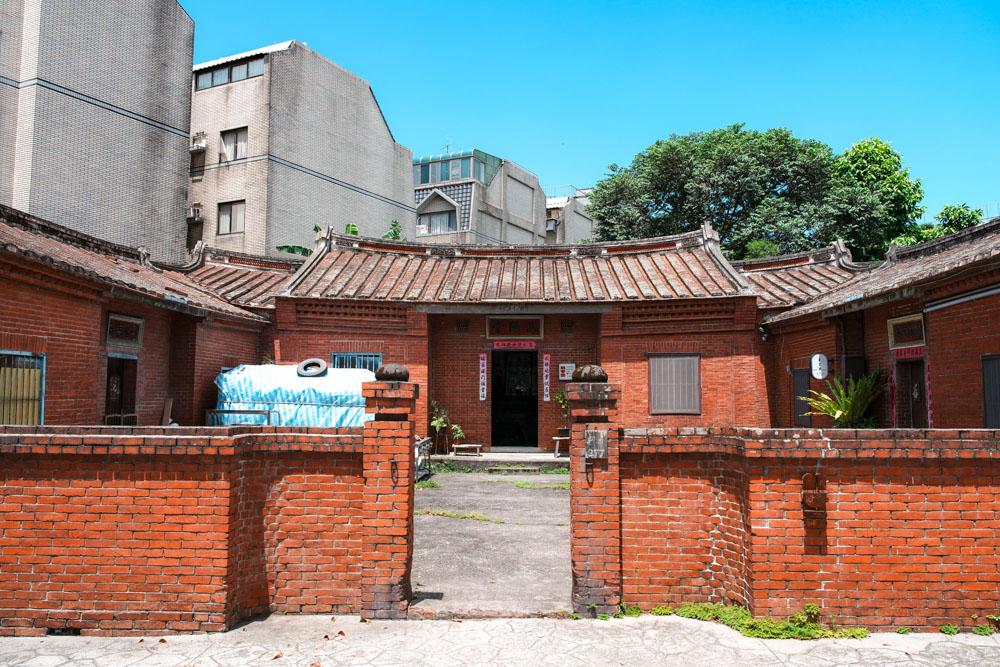
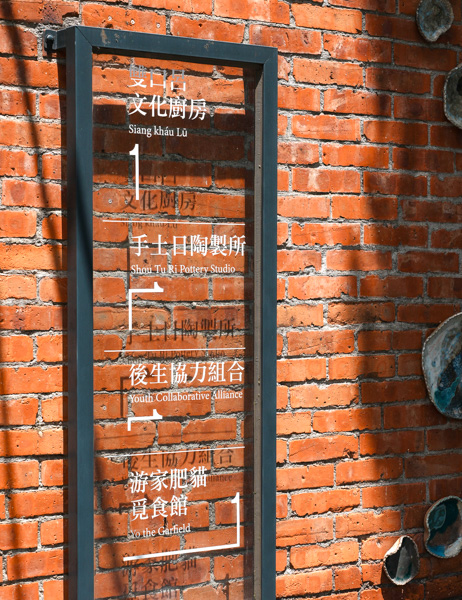
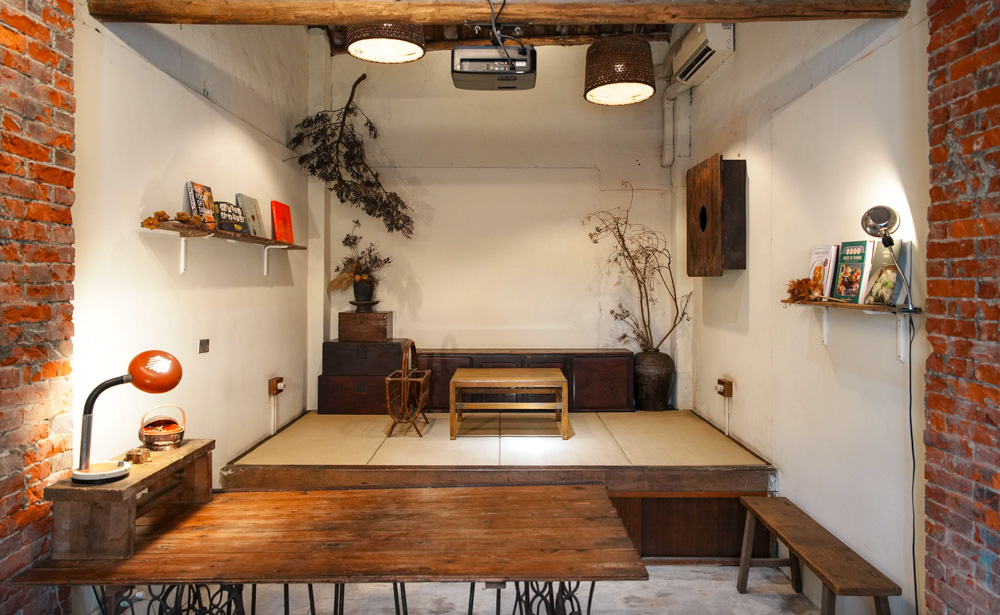
“Once people try making them, they’ll realize how undervalued these cakes are in the market,” Huang says. “After a class, students often tell us, ‘This ang-ku-kue should be sold at NT$100!’ (instead of the usual NT$30 to NT$40)!”
It took Huang and Chou a year of driving around Taoyuan before they came across the red-brick courtyard residence, located in a quiet stretch off the Formosa Freeway surrounded by open fields, factories, and aging houses, that would become Siang Khau Lu’s home.
It had been vacant for years and was filled with junk. With the help of Earthing Way (earthingway.waca.ec), a Taipei craft shop known for repurposing old objects, the couple spent another year transforming the space into a charming workshop that still carries the atmosphere of the past.
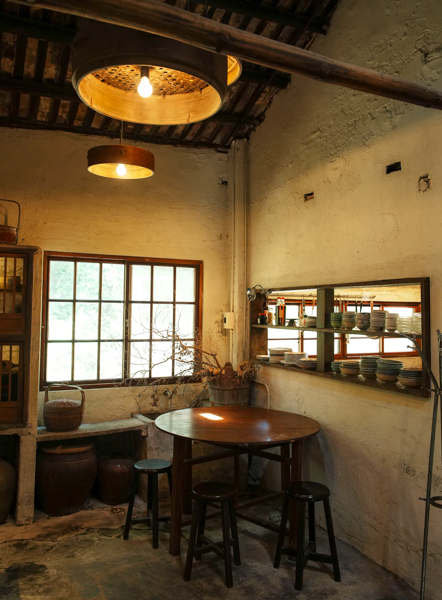
Many items found on site were reused, including the wooden beams now serving as shelves and furniture surfaces. Traditional farm tools and kitchenware are incorporated into the decor: a hanging rack for cutting boards made from a hoe, and lamps shaded with bamboo steamers. The tools used for classes are mostly traditional, most notably the couple’s prized collection of wooden cake molds of turtles, peaches, coins, fish, and other auspicious shapes – one of which was passed down from Chou’s great-great-grandmother.
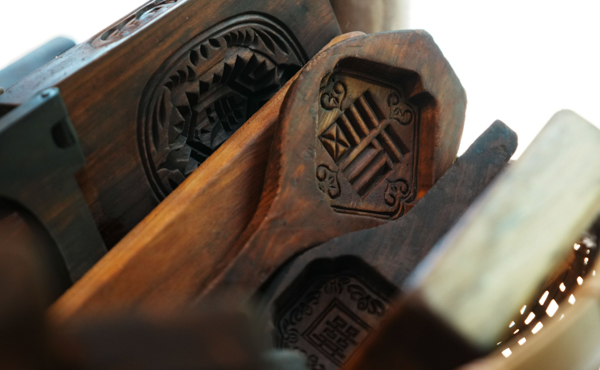
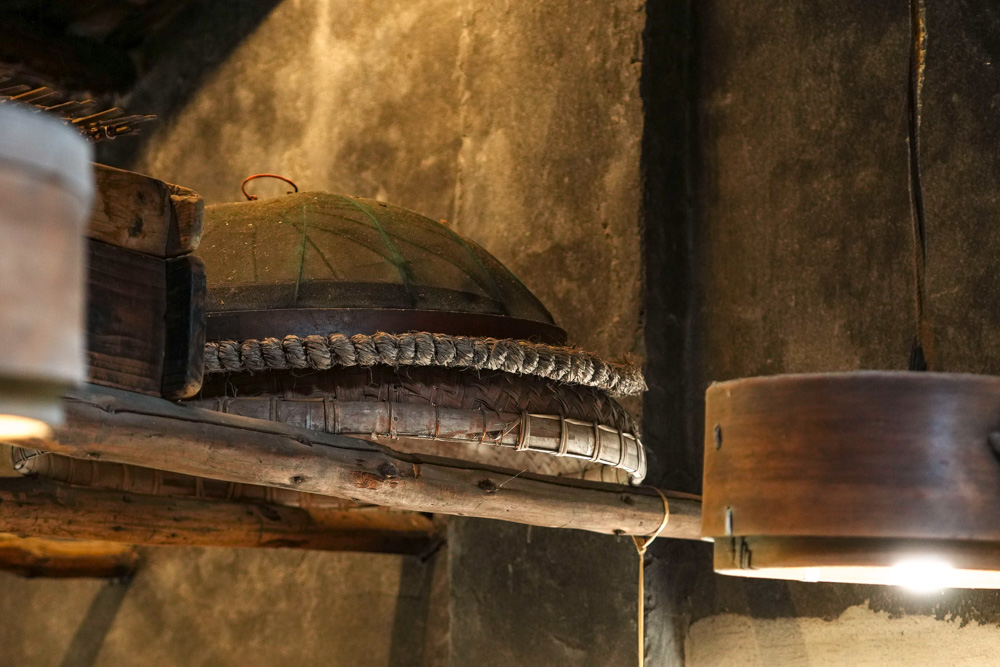
Some elements have been modernized – the classic wood-fired stove was converted to gas, and some roof tiles were replaced with skylights to allow for better natural lighting.
The duo’s culinary journey began during a three-month trip to Europe in 2014, during which they were often asked about Taiwanese cuisine. They could rattle off night-market favorites – stinky tofu, boba milk tea, xiaolongbao – but these items are not typically made in home kitchens. After returning, they began pondering the essence of Taiwanese foodways. Chou recalled the rice-based morsels her grandmother would make for different occasions, and they decided to learn from her.
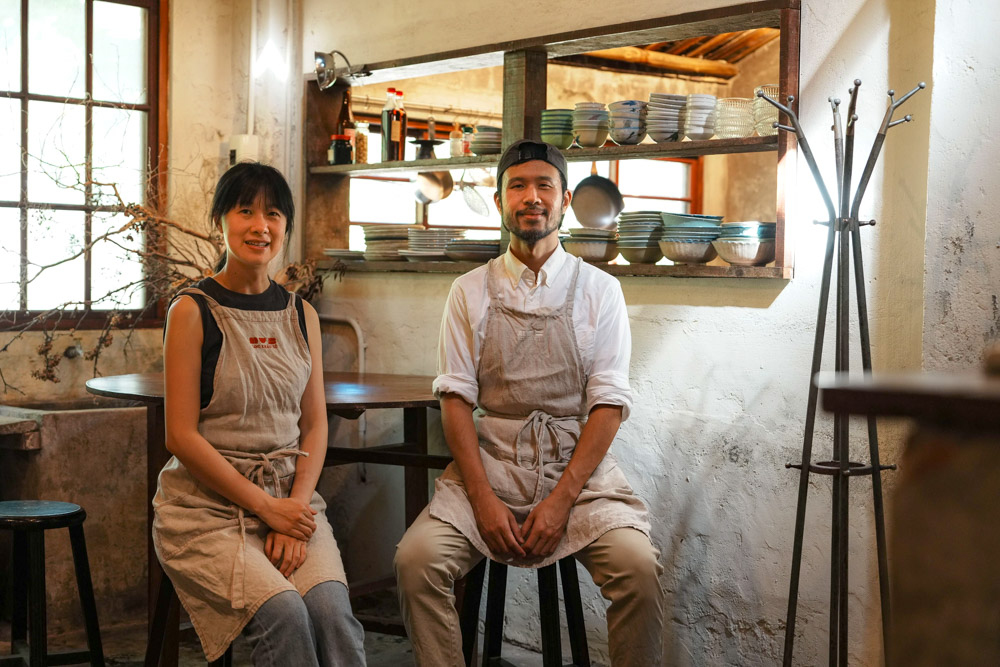
“We realized we had never taken these foods seriously,” Huang says. “We just saw the finished products and ate them, never thinking about how each was made or why.”
At first, they learned merely out of interest. The idea for Siang Khau Lu was born during their honeymoon to Myanmar’s Inle Lake in 2017, where they attended a cooking class in a traditional stilt house. Grandma was not happy about their decision, seeing the process as physically taxing and not lucrative, telling them the plan was impractical. Even today, she remains skeptical, Chou says.
The classes are mostly for adults, although some bring children, many of whom have never tasted a rice cake before. The schedule follows the traditional seasons and festivities, with recipes rotated every two months. For September-October, it’s oo-kue-khiau (savory taro cakes), offered during Ghost Month, and for November-December, it’s tshai-pau-koe (radish rice dumplings), marking radish season, along with tang yuan (glutinous-rice balls; Mandarin pronunciation) for the winter solstice.
Classes begin with an introduction to the types of rice consumed in Taiwan, and the ingredients, traditions, and history behind the recipe being used for the day. The couple pre-soak, grind, and dry the rice into flour – an hours-long process – before guiding participants in kneading dough, preparing fillings, and steaming the finished goods.
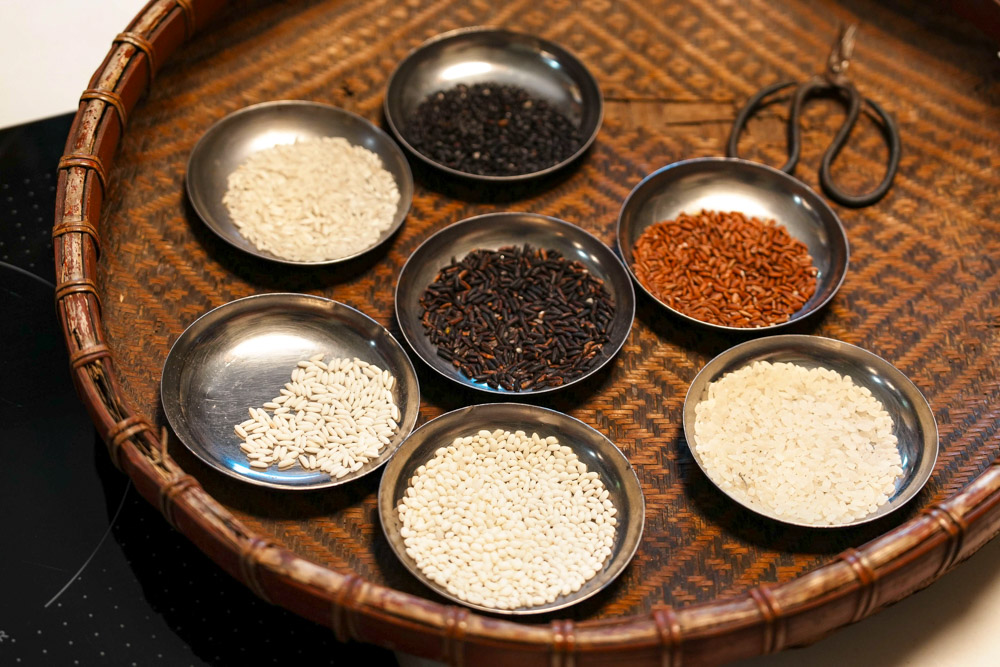
Unlike the practice with market-sold cakes, Huang and Chou carefully select their ingredients – everything is organic, locally sourced, eco-friendly, additive-free, and often fair trade. For example, instead of artificial coloring, they use red yeast for the ang-ku-kue. “Rice cakes are still mostly made for large-scale festivals or temple events, so it’s hard to pay close attention to the ingredients,” Huang says.
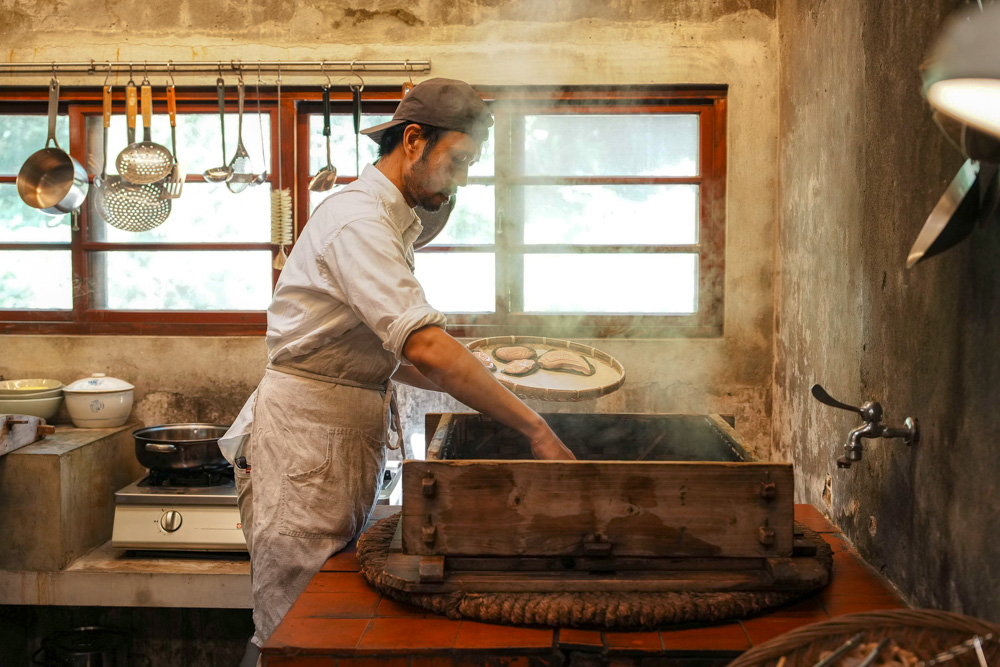
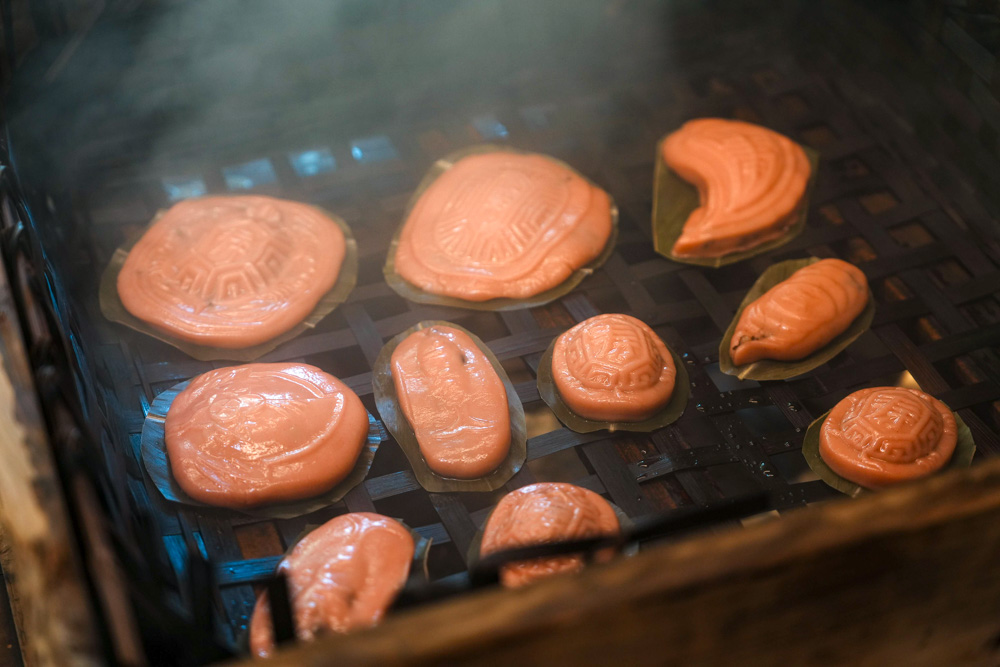
Participants receive printed recipes and are encouraged to continue making the cakes at home. “Only when these foods are reintroduced to the modern kitchen do they stand a chance of surviving,” Huang says. Those too busy to grind their own rice can buy rice flour, but Huang thinks that the taste and texture cannot compare to freshly ground rice. “You have the complete fragrance of rice,” he says. “You get out what you put in.”
Huang and Chou don’t know how much they can change the industry or market preferences, but are pleased they’ve at least received positive feedback from participants, and their daughter has been willing to help out as well.
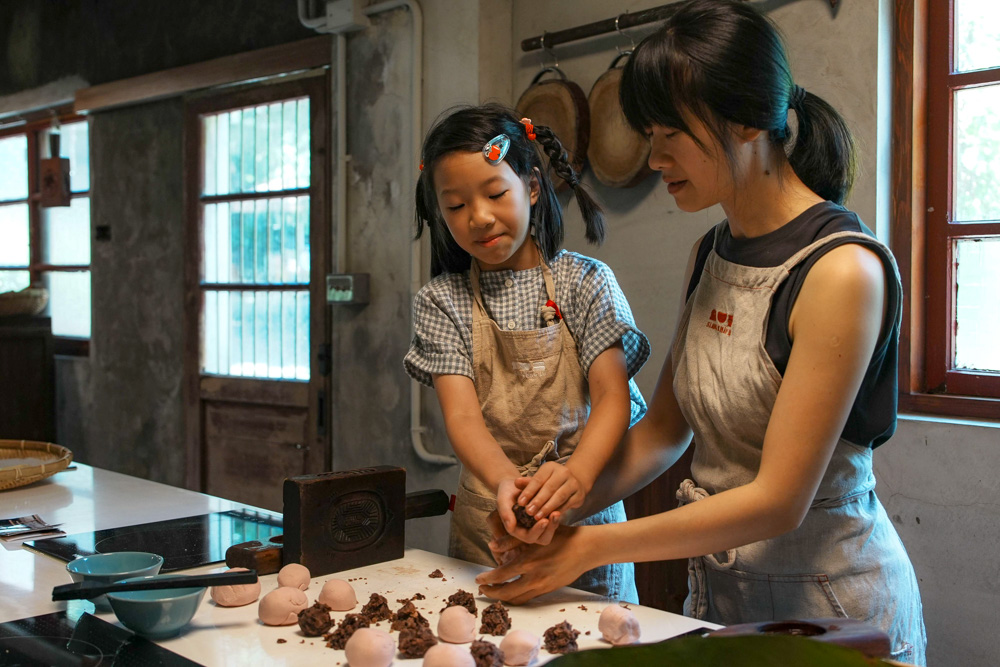
Siang Khau Lu Cultural Kitchen
(雙口呂文化廚房)
Add: No. 277, Sec. 1, Nanxing Rd., Daxi Dist., Taoyuan City
(桃園市大溪區南興路一段277號)
Website: siangkhaulu.com
FB: www.facebook.com/siangkhaulu
IG: www.instagram.com/siangkhaulu




